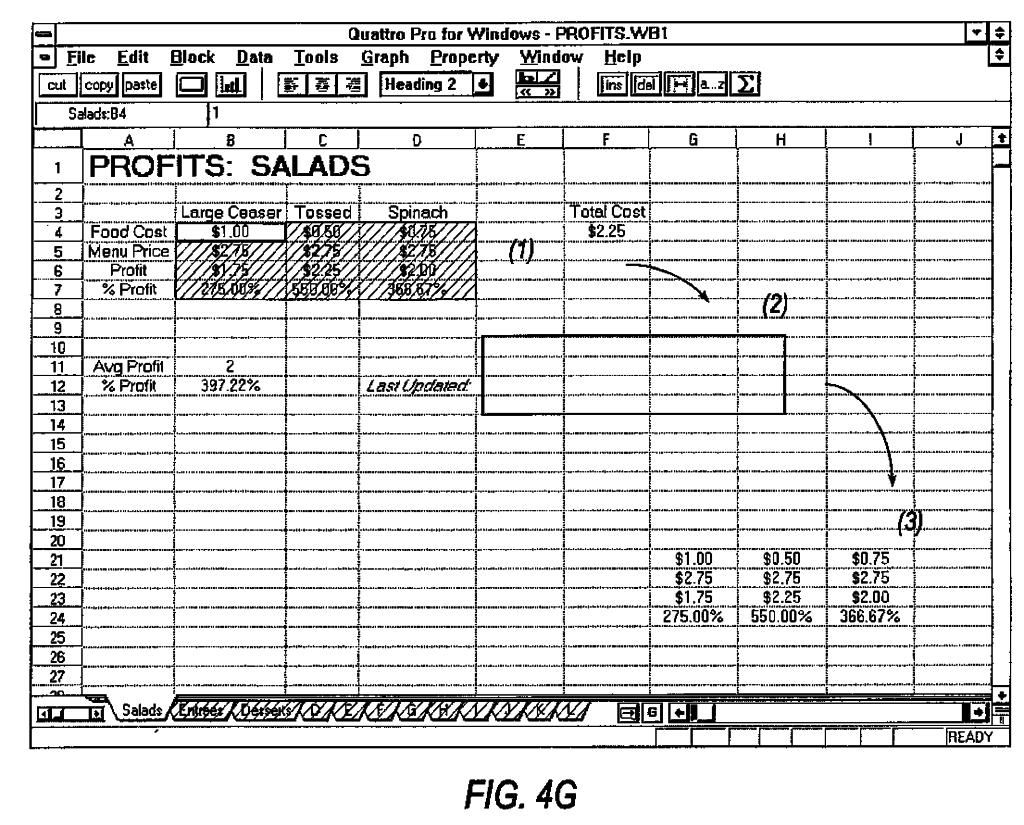15/10/2018
Patents for user interfaces are alive and well in the US. The latest confirmation of this comes from the recent Data Engine Techs. LLC v. Google LLC decision from the US Federal Circuit relating to spreadsheet UIs. Follow me as I dive between the sheets to have a look at lessons that can be learned and how this decision compares to the position in Europe.
Since the “Alice” decision by the Supreme Court in 2014 practitioners in Europe have been keeping a close eye on our US friends, eager to see how their practice develops on the tricky issue of patent-eligible subject matter. Most jurisdictions have an approach to dealing with patentable subject matter that, one way or another, comes down to the question of whether a software invention meets somewhat nebulous criteria. In Europe the claimed subject matter needs to be “technical”. The USPTO asks whether a claimed invention amounts to “significantly more” than an attempt to patent an “abstract idea”. By necessity, the courts have adopted a “know it when you see it” approach, guided by case law, for borderline inventions. In the real world this often leaves practitioners arguing that a particular invention is similar to a previous allowable case. So what nuggets or flakes of gold can we pan from the recent decision from the US Court of Appeals for the Federal Circuit?
Data Engine Techs. LLC v. Google LLC concerns a set of four patents. US 5,590,259, US 5,784,545 and US 6,282,551 (nicknamed the “Tab Patents”) relate to those clickable tabs found at the bottom of spreadsheets used to flick between sheets. US 5,303,146 relates to a method for tracking changes affecting sets of cells. It didn’t get a nickname, and I’m not going to say much about it in this post, so let’s just call it “The Other One”.
Data Engine Technologies LLC (DET) filed a suit against Google, asserting infringement of the patents by Google Sheets. Google counterclaimed for invalidity on the grounds that the patents were all directed to abstract subject matter under US statute 35 U.S.C. § 101. The District Court of Delaware agreed with Google at first instance, and the decision was then appealed by DET to the Federal Circuit.
SPOILER ALERT: The Federal Circuit took the view that the inventions defined by the Tab Patents were not abstract, and instead related to a better method for navigating through complex three-dimensional electronic spreadsheets. However, the invention defined by The Other One was held to relate to the abstract idea of collecting, recognizing, and storing changed information.
THE TAB PATENTS
The general idea being covered is the (now) familiar use of notebook-style tabs to allow the user to flit between sheets within a spreadsheet, and to allow cells in one sheet to reference cells in another. You can see a set of the tabs in question towards the bottom of figure 4G from any of the Tab Patents, reproduced below.

Whilst these interface objects are thoroughly familiar to Excel pros, amateurs and super-users the world over, it needs to be remembered that the Tab Patents claim a priority date of 8 April 1992. This makes them older than pop sensation Miley Cyrus. Using spreadsheets back in 1992 was certainly no party, in the USA or otherwise, because users were too busy trying to learn the complicated commands required to perform basic operations.
The Federal Circuit took the view that the invention satisfied the first step of the Alice test; the invention was simply not directed to an abstract idea. The reasoning was that it “provides a specific solution to then-existing technological problems in computers and prior art electronic spreadsheets.” (Page 13, second para). The Court seemed swayed not only by the fact that the invention provides a user-friendly interface but, more than that, the interface allowed easy access to the 3D spreadsheet functionality. This functionality provided “rapid access to and processing of information in different spreadsheets, as well as easy navigation in three dimensional spreadsheets” (page 13, final paragraph).
THE VIEW FROM ACROSS THE POND
As a European practitioner and spreadsheet enthusiast, two things jumped out at me when reading the decision. Firstly, the Federal Circuit is talking about the invention solving a “technological problem”. This is very “European” language. It’s the sort of thing you would read in a decision by the European Patent Office. It gets even more European when it states that one of the claims “recites precisely this technical solution and improvement in computer spreadsheet functionality.” (See page 14, second paragraph). Here we have the second highest court in the US deciding patent-eligible subject matter based upon an invention providing a technical solution to a technical problem. What’s next for the USA? Crumpets, croissants and steins of crisp, frothy lager?
Secondly, the Court did not just say that the invention provides some sort of generic improvement to ease of use. It‘s important to note that the reasoning places weight on what the invention is being used for – linking operations between different sheets – and how, in the context of the spreadsheet system, this is done. Just making something easier for a user isn’t going to cut it, as confirmed by the Federal Circuit’s earlier decision in Core Wireless, where the Court was convinced that patentable subject matter was present because the claims were directed “to an improved user interface for computing devices” and “a particular manner of summarizing and presenting information in electronic devices.”
The particular manner of implementation was clearly important in the decision, as shown by the fact that a more general claim in one of the Tab Patents (the ‘551 patent) was found to be non-patent eligible. The claim was still directed towards the general concept of providing a “user-settable page identifier” that identifies different sheets, but it didn’t specify the use of navigable notebook tabs within the interface. According to the Court “Claim 1 of the ’551 patent is therefore not limited to the specific technical solution [Dear America. The European Patent Office called. They want their test for patentability back] and improvement in electronic spreadsheet functionality that rendered representative claim 12 of the ’259 patent eligible. Instead, claim 1 of the ’551 patent covers any means for identifying electronic spreadsheet pages.” (page 22, first paragraph).In contrast, in relation to the other claims of the Tab Patents, the Federal Circuit purred: “The claimed method does not recite the idea of navigating through spreadsheet pages using buttons or a generic method of labelling and organizing spreadsheets. Rather, the claims require a specific interface and implementation for navigating complex three-dimensional spreadsheets using techniques unique to computers.” (Page 15, first paragraph).
A particular issue can occur during prosecution of patent applications in Europe if the invention is claimed quite generally, using very functional terminology. Without some specific implementation details in the description, applicants can find themselves on the receiving end of objections that the claims cover non-technical implementations or are simply the automation of an existing human-implemented method. If there is no description of the particular technical features needed to implement the invention this can be a difficult hole to climb out of. If the US Courts look favourably on applications that claim more detail of the specific implementation of a concept, rather than the general function, then adopting this practice can only be a positive for applicants from the US looking to file in Europe.
THE VIEW WITHIN EUROPE
European patent EP0569133 corresponds to the US Tab Patents. It was granted to somewhat narrower claims, but broadly to the same concept. Admittedly the case was decided in 2000, just a couple of years prior to the issuance of the Comvik decision, which laid the groundwork for the EPO’s current approach to claims that mix technical and non-technical subject matter. Nevertheless, the decision to grant by the Examining Division explained that the invention “provides a new and intuitive user-friendly interface which solves the problems of how to visualize and how to navigate in a workbook composed of multiple worksheets.”
Again, we see the concept of “user-friendly” appear in the reasoning in favour of allowance, but we also see more than just this. Improving the navigation in a workbook composed of multiple worksheets is seen as being something technical. The Division also seemed to be swayed by the fact that the user interface renders a 3D-effect by showing the spreadsheet in a perspective-like manner, although it’s not entirely clear where this limitation actually appears in the granted claims…
PUTTING IT TO BED
Patents for software, and particularly UIs, are alive and well in the US, as well as in Europe. However, it’s important to make sure that, beyond the general functionality, applications include sufficient detail on how the software-implemented method actually works in practice. In the case of the Tab Patents, this came in the form of the specific mechanism of a set of user-selectable tabs that were each associated with particular sheets.
We’re also seeing, more and more, the US Courts using similar language to the EPO when deciding this sort of case. The question becomes: does the invention provide a technical solution to a technical problem? The next question is, of course, what do you mean by “technical”? But it’s late, so we’ll leave that for another time.
This article is for general information only. Its content is not a statement of the law on any subject and does not constitute advice. Please contact Reddie & Grose LLP for advice before taking any action in reliance on it.


